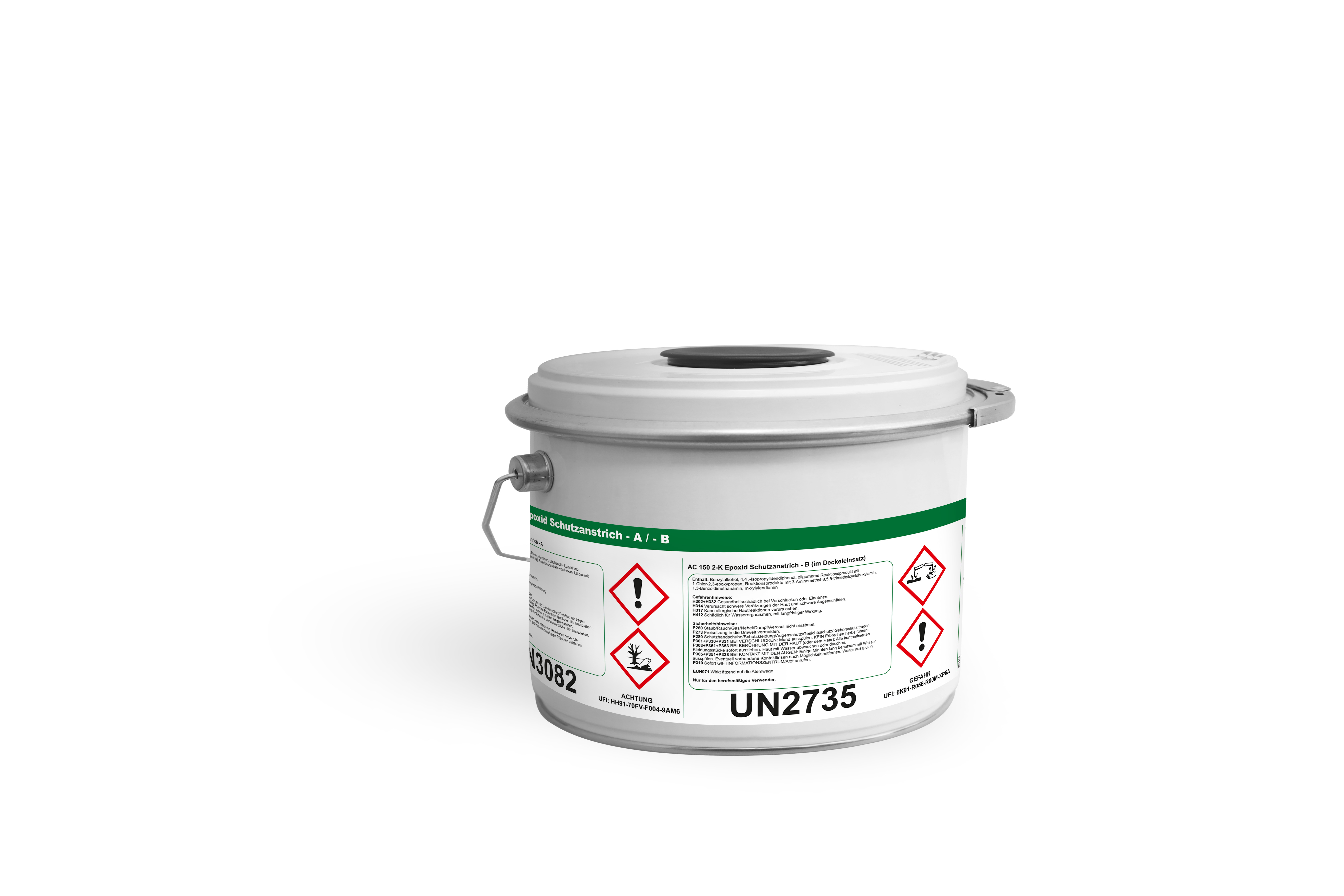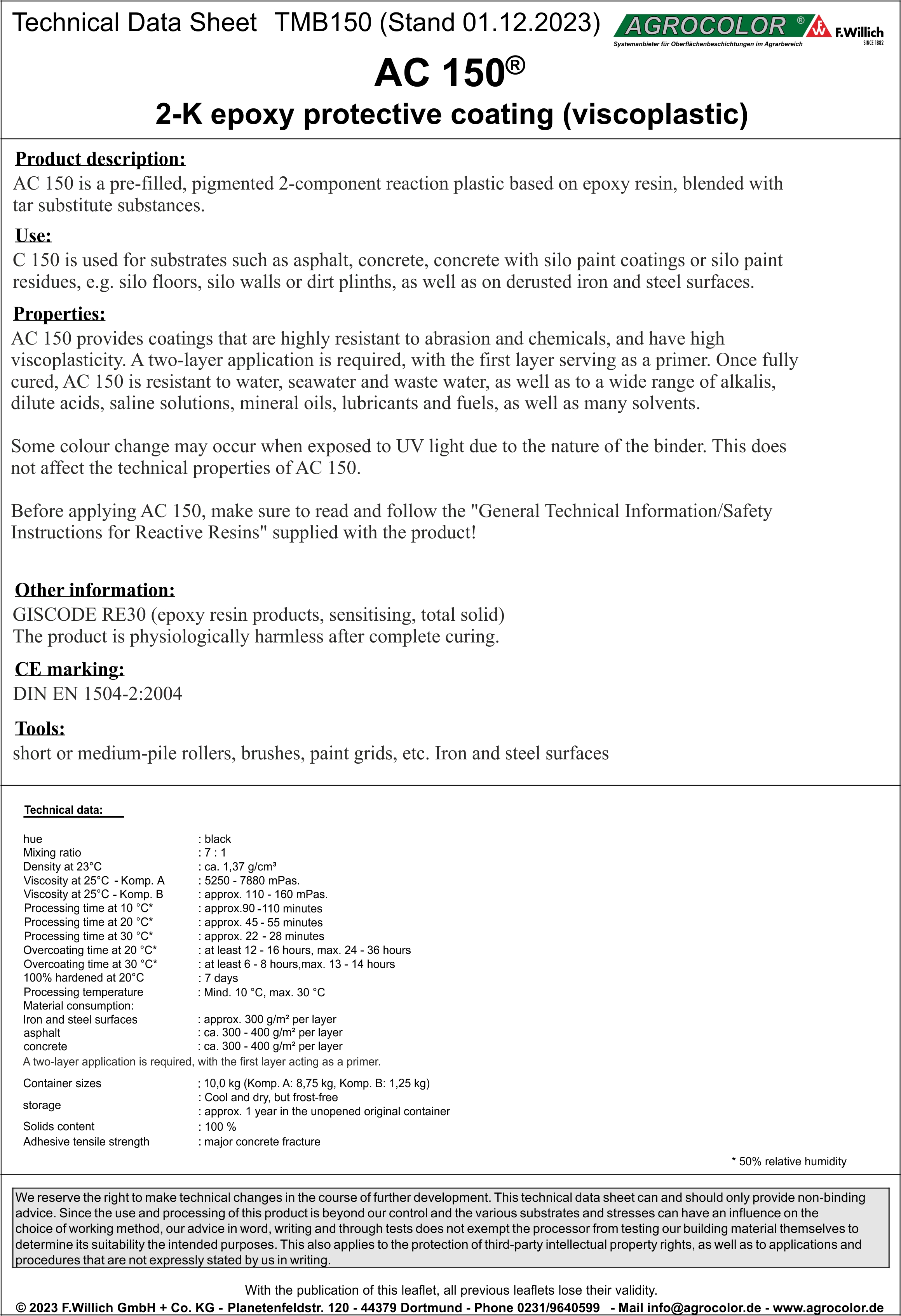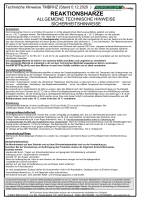2-K epoxy protective coating (viscoplastic)
AC 150 is a pre-filled, pigmented 2-component reaction plastic based on epoxy resin, blended with tar substitute substances. AC 150 is used for substrates such as asphalt, concrete, concrete with silo paint coatings or silo paint residues, e.g. silo floors, silo walls or dirt plinths, as well as on derusted iron and steel surfaces. AC 150 provides coatings that are highly resistant to abrasion and chemicals, and have high viscoplasticity. A two-layer application is required, with the first layer serving as a primer. Once fully cured, AC 150 is resistant to water, seawater and waste water, as well as to a wide range of alkalis, dilute acids, saline solutions, mineral oils, lubricants and fuels, as well as many solvents. Some colour change may occur when exposed to UV light due to the nature of the binder. This does not affect the technical properties of AC 150. Before applying AC 150, make sure to read and follow the "General Technical Information/Safety Instructions for Reactive Resins" supplied with the product!
- solvent-free
- emission-free
- physiologically harmless after complete hardening
Container size:
- 10 kg
Surfaces:
 Concrete
Concrete Asphalt
Asphalt Tiles
Tiles Ferrous metals (derusted)
Ferrous metals (derusted) Screed
Screed Bitumen
Bitumen
 Cement plaster
Cement plaster other metals
other metals Exposed concrete
Exposed concrete Sand-lime brick
Sand-lime brick Glass
Glass Sheetrock
Sheetrock
Tools:
short or medium-pile rollers, brushes, paint grids, etc. Iron and steel surfaces
![]()
![]()
Other information:
GISCODE RE30 (epoxy resin products, sensitising, total solid) The product is physiologically harmless after complete curing.

Application instructions
When applying reactive polymers, the temperature of the surface is crucial, in addition to the ambient temperature. Chemical reactions generally slow down at low temperatures; this also extends the application, recoatability, walkability and curing times. At the same time, the higher viscosity leads to an increase in consumption. At high temperatures, the chemical reactions are accelerated, meaning that the above-mentioned times are shortened accordingly. For the reactive polymer to cure completely, the average temperature of the surface you are applying it to must be above the minimum temperature. For more detailed application instructions, please refer to the technical data sheet and the sheet on reactive resins / application instructions.



